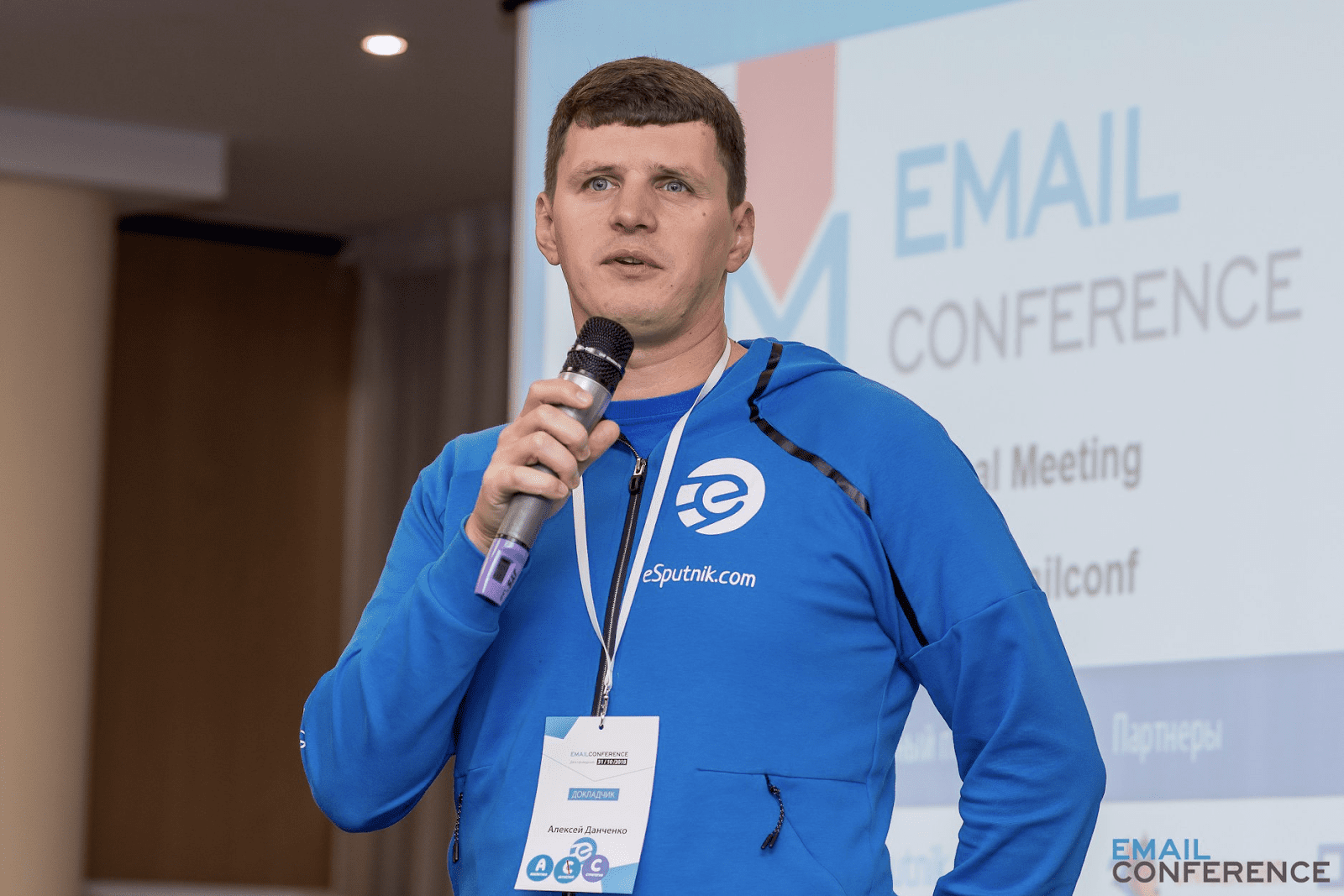Oleksii Danchenko is a CEO and co-founder of eSputnik, a marketing automation platform for B2C and B2B. It gives business tools to collect contacts, nurture leads and run data-driven customer communication through emails, SMS, app, and browser notifications and messengers.
Today, we’ll speak with Oleksii on how to automate your B2B lead nurturing, send emails people will open, and turn prospects into customers.
Oleksii, eSputnik has been on the market for about 10 years now. How many B2B clients do you have and how extensively do they use email automation for marketing purposes?
Currently, we have around 4,500 B2B customers. They all use email as their marketing channel although its share differs depending on the company type and service they provide.
What campaign type do most brands send?
A newsletter is an email 99% of B2Bs are sending. Unlike e-commerce, business companies have rare product updates, don’t run dales every month, and typically don’t do user-generated activities like contests and challenges. Most of them however have regularly updated blogs and sending a weekly newsletter and monthly digest helps them keep the conversation with their audience going.
If a company doesn’t publish blog articles often, what else to include in a newsletter?
Whatever content you produce can make the material for emails: YouTube videos, webinar recordings, podcast episodes, reports, cheat sheets, system updates. You can send news digests or curated content related to your industry and customers’ interests.
Aside from newsletters, what other email options do businesses have for lead nurturing?
Well, this question is big. Planning email automation for B2B leads nurturing depends on how you obtain the lead’s contacts and what they actually are.
Typically, you get B2B leads available for email marketing in one of the ways: a person has subscribed to your newsletter through the website or social media or a person has registered for your event or downloaded gated content.
I see. Let’s move steadily then. Can you give at least basic tips on how to nurture prospects who have subscribed through a website form?
If you have a simple form with only one or two required fields, it will generate you the least potential lead on whom you’ll have only an email address and name. By the way, the name can often be fake or purposefully misspelled so make sure to proofread it before addressing the client by it.
There is little use of indirect and personalized marketing to these people. At their current stage, they have no clear intention or purpose of buying a particular service from you. They’re just investigating. Also, you have not enough data on their behavioral and preferential patterns to create targeted email campaigns.
Sending new subscribers regular bulk campaigns (newsletter, webinar promo, Q&A sessions, system updates, etc.) is the right strategy. Educate people about your product, steadily introduce it to all of your platforms (social media, YouTube, app, podcast), and invite you to whatever events you’re hosting.
If you sell multifunctional services and your content is rather extensive, introduce subscription categories and let people choose what topics they want to receive and how often.
More important, stick to the selected preferences. Don’t ask for the sake of asking. Business people have too little time to waste it on irrelevant content. Subscription management can be easily automated, well, in eSputnik for sure, ensuring people will be receiving only what they’ve subscribed to.
Thanks. And what about strategies for webinar registrants or those who register to download your content? I may assume they require a different approach.
Right. Depending on the fields of your registration or access-giving form, you may have a contact’s name, email, phone, job position, company name, location. All this data is transferred to a unified contact card building you a lead profile. You can target such leads with specific campaigns and offers. They may consist of several series and different emails:
- Thank you for visiting/downloading. Thank you for participating and provide the link to the recording or blog takeaways.
- Tell us what you think. Ask for feedback on the event. Would people like to attend similar events in the future? If yes, include them to a separate segment and send corresponding alerts.
- Next webinar announcements. Send a series consisting of a promo, early bird tickets, discount promo code, Q&A with experts, last-minute reminder, etc to prompt a new registration.
- Regular newsletters. Send educational and promotional content.
- Cold emails. Offer a demo tour of your product. Explain how a toy service can solve the possible needs of the lead and what operational tasks it can cover.
The list is endless and depends on the available lead info and their response. It’s better to create a separate workflow for each campaign to see which one generates better performance and has a higher conversion rate.
If you additionally have a contact’s phone, you can build multichannel workflows and try to reach people who don’t open your emails through SMS. Nowadays, few are willing to answer direct calls while checking a short text message may be less demanding.
Wow, that’s big. Thanks for sharing. I believe you yourself use most of these techniques.
Sure. And in general, this advice is applicable to all kinds of business, not only B2B.
But let’s talk more about you. What email strategy does eSputnik have? What emails do you send and how often?
We send regular newsletters once every two weeks and one system update digest every month. At the end of the year, we send the yearly report and benchmarks with main email marketing statistics. As a CEO, I also send a short greeting and share predictions for the upcoming year.
eSputnik is an all-in-one multifunctional platform with extensive functionality meaning people perform numerous diverse operations within our system. That’s why we send many transactional emails with import/export reports, download results, operation status reports, notifications and alerts, account changes, pricing plan auto-renewal, etc.
We also have a separate strategy for webinar emails: announcement, reminders, post-webinar surveys, and feedback.
Sounds like a lot of emails to me.
That’s actually a good point. It is a lot and many companies send even more. That’s why in eSputnik we have a sending limit you can set for your campaigns. It helps avoid being too annoying and pushy.
No one likes being bombarded, and business people like it the least. So you set the number of emails a person can send to daily and weekly, for example not more than 2 emails a day and 5 emails a week. The system checks it automatically and emails exceeding the limit aren’t sent, provided you haven’t labeled them as some extra important alerts.
Nice. And what other features do you have that help businesses manage their communication more effectively?
Apart from all tools for email automation like an email builder, multichannel workflow builder, contact segmentation, mobile marketing, etc. eSputnik also offers many unique features. These are multilingual messaging across all platforms, dynamic content through Velocity, support of AMP for email, and personalized website recommendations.
And our big upcoming release is a custom subscription form builder! Using it, you’ll be able to create subscription forms based on your corporate style, customize fields and help text, add images and come up with whatever design. We’re really excited about it.

































